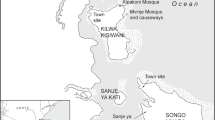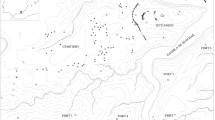Abstract
In the past century, it has long been debated in the archeological, historical, geographical, and many other related communities where the capital of the Luolan and Shanshan states was in the Lop Nor region. This paper presents three AMS radiocarbon ages from a newly-discovered ancient city at about 6.3 km to the northwest of the Xiaohe Graveyard, and fifteen new radiocarbon ages from the Loulan (LA), LE, Qieerqiduke, Milan, and Tuyin sites in Lop Nor. The new investigation shows that the age of newly-discovered ancient city is at ca. 440–500 AD, belonging to the Northern Wei Dynasty (386–534 AD). This is about 100–300 years younger than Loulan (ca. 100–230 AD), LE (ca. 230–300 AD), Qieerqiduke (ca. 200 AD), and Tuyin (ca. 100 AD). A wooden beam from Milan fortress is dated to ca. 370 AD, while the age on north wall at west gate of the fortress is younger, around 770 AD, suggesting that its construction time might be at the Tang Dynasty. According to 14C ages, cultural relic style, and the geographical location, the newly-discovered ancient city is probably attributed to “Zhubin City”, as documented in the historical literature. Temporally, we name the city “ancient Zhubin River City”. However, the characteristics and functions of this ancient city are largely unknown and need more detailed archaeological excavation and investigation in the future. Given its location near the ancient postal relay of Alagan on the crossroad, there is no doubt that the newly-discovered city was at an important geographical position on the Silk Road, no matter whether it was called “Zhubin City”, or “Lielo City”, or the capital of Loulan state—“Yuni City”. Our findings provide new evidence for the temporal and spatial distribution of ancient relic sites and the development of civilization in western China, thus contributing to our understanding of the relationship between human activities and environmental change in the Lop Nor region.
Similar content being viewed by others
References
Chen Z Q. Lop Nor and Lop Desert (in Chinese). Acta Geogr Sin, 1936, 3: 18–49
Wang G W. Viewing Hall Serials (Guantang Jilin), Excursus, Vol.3 (in Chinese). Beijing: Zhonghua Book Company, 1961. 862–863
Huang W B. Historical Archaeology Analects (in Chinese). Beijing: Cultural Relics Press, 1989. 1–412
Yu T S. Historical Research of Western Regions from Western and Eastern Han, Wei and Jin, to the Northern and Southern Dynasties (in Chinese). Beijing: Zhonghua Book Company, 2003. 1–567
Xiao X Y. Summary of Archaeology in Luolan-Shanshan (in Chinese). West Reg Stud, 2006, 4: 82–92
Xia X C, Wang F B, Zhao Y J. Lop Nor in China (in Chinese). Beijing: Science Press, 2007. 1–482
Jan R. Questions of Ancient Human Settlements in Xinjiang and the Early Silk Road Trade, with an Overview of the Silk Road Research Institutions and Scholars in Beijing, Gansu, and Xinjiang. Sino-Platonic Papers, 2008, 185:1–123
Hedin S. LOP NOR: Scientific results of a journey in central Asia (1889–1902). Vol. 2. Stoockholm. Scientific Report. 1905
Investigation Team of Cultural Relics in Luolan. Brief Report on the Investigation of Culture Relics in Luolan Region (in Chinese). Xinjiang Cult Reli, 1988, 3: 85–94
Wang S C. Historical status of the capital Luolan and ancient Lop Nor region (in Chinese). West Reg Stud, 1996, 4: 43–53
Yidilisi A, Zhang Y Z. Brief description of the archaeological studies since 1993 at the Keriya River basin (in Chinese). West Reg Stud, 1997, 3: 39–42
Meng F R. New History of Luolan (in Chinese). Beijing: Guangming Daily Publishing House, 1990. 168–232
Hou C. The concrete evidence for the seat of jurisdiction of Clarklik under the superior chief of the Western Region during the Wei and Jing dynasties-argument on question of charklik (Part I) (in Chinese). Dunhuang Res, 2001, 105–111
Hou C. Clearing up questions in Loulan research-arguments about Loulan problems, part 2 (in Chinese). Dunhuang Res, 2002, 66–72
Huang S Z. A preliminary study of the capital Luolan States at the Luolan city or at LE city (in Chinese). Cult Rel, 1996, 62–72
Enoki K. The location and relocation of Shanshan States capital. In: Enoki K, ed. Enoki Kazuo Analects (Part I) (in Japanese). Tokyo: Jigu Shuyuan, 1992. 67–120
Lin M C. Investigation of the original capital of Luolan States (in Chinese). Cult Rel, 1995: 79–85
Li J F, Xia X C. Scientific Investigation and Study on the Lop Nor (in Chinese). Beijing: Science Press, 1987. 118–131
Author information
Authors and Affiliations
Corresponding author
Additional information
Supported by the National Natural Science Foundation of China (Grant No. 40771216), Hundred Talent Program of the Chinese Academy of Sciences and Project of Water Resources in Northwest of China, Chinese Academy of Engineering.
About this article
Cite this article
Lü, H., Xia, X., Liu, J. et al. A preliminary study of chronology for a newly-discovered ancient city and five archaeological sites in Lop Nor, China. Chin. Sci. Bull. 55, 63–71 (2010). https://doi.org/10.1007/s11434-009-0586-4
Received:
Accepted:
Published:
Issue Date:
DOI: https://doi.org/10.1007/s11434-009-0586-4




